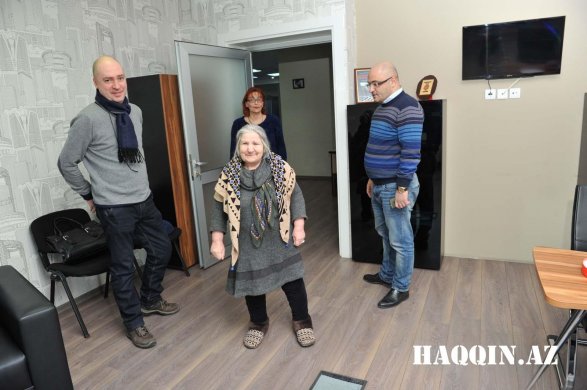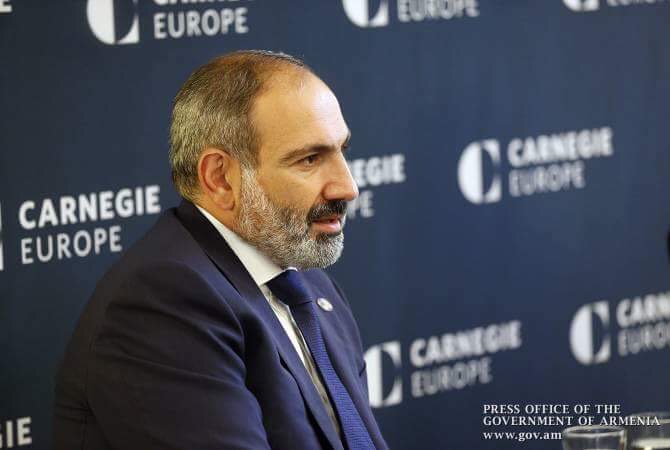Armenia: Can the Government Reverse Demographic Decline?
Armenia’s government is pursuing an ambitious goal of increasing the country’s population by a third over the next two decades. It is unclear how the government intends to reach that goal, but the effort suggests the country’s leadership is trying to address growing public concern about the country’s demographic decline.
President Serzh Sargsyan announced the goal at the first meeting of Armenia’s newly elected parliament in May. The population, at just under 3 million today, should rise to 4 million by 2040, Sargsyan said. “Our major task for the coming decades should be a significant improvement in the demographic situation in Armenia,” he stressed.
Such an increase would mark a dramatic reversal of Armenia’s recent demographic trend. Since gaining independence in 1991, the country’s population has declined by about 640,000 people. According to statistics from the United Nations, it is projected to decrease further, to 2.7 million in 2050 and to 1.8 million in 2100. And those are the conservative estimates: in a worst-case scenario, the UN projects that the population could fall to 2 million by 2050.
So far, the government has said little about how it intends to increase the population. In his speech, Sargsyan said the initiative would have three prongs: halting emigration, increasing the birthrate and longevity, and creating economic conditions that would encourage emigrants to return to Armenia. By the end of 2017, the government will come up with a long-term strategy, as well as a five-year medium-term plan with “concrete measures and their implementation timetable,” a senior Sargsyan adviser, Aram Gharibyan, told EurasiaNet.org.
Armenia is not alone among countries in Eurasia that are grappling with a demographic decline. According to UN projections, Georgia’s population is predicted to drop from 4 million in 2015 to under 3.5 million in 2050. Within the same timeframe, Belarus’s population is projected to drop from 9.5 million to 8.1 million; Ukraine’s from 44.8 million to 35.1 million; and Russia’s from 143.5 million to 128.6 million.
But solving Armenia’s demographic problems poses unique challenges because of its high level of migration. More Armenians are being born than dying – known as “natural increase” – but that is far outweighed by those who leave the country, mostly for better job prospects. About 1.5 million Armenians have moved abroad since 1991, about 90 percent of them to Russia.
“You need to stop migration,” said Artak Markosian, a demographer at the Armenian Institute of International and Security Affairs (AIISA), a Yerevan think tank. “Without that, any natural increase won’t matter.”
Fertility, though, also has decreased: in 1990, the average Armenian woman bore 3.2 children; today that figure is 1.5. That is partly due to economic insecurity, and partly to changes in social norms, said Garik Hayrapetyan, the director of the Armenia office of the UN Population Fund.
He contrasted the traditional Armenian ideal of “seven sons sitting with you around the table” to a more contemporary sensibility taking hold. “Now it’s about thinking of the family well-being – that having your next child isn’t going to risk the well-being of your family. This is very important,” he said. “The issue is to create the environment where people would think about having their desired number of children, which is still three to four in Armenia” as compared to one or two in Europe, he said.
Another demographic issue for Armenia is sex-selective abortions, which has skewed the gender ratio among children being born. Armenia’s rate of 112 boys to 100 girls is the third highest in the world, behind only China and Azerbaijan. If that rate continues, there will be 93,000 “missing” women by 2060 and a corresponding drop in births, Hayrapetyan said.
Armenia has made some modest efforts to encourage families to bear more children. One program, launched in 2012, offers 1 million drams (about $2,100) to families who have a third or fourth child and 1.5 million (about $3,130) for fifth children on up. But those one-off benefits do not seem to be enough to influence most Armenians’ family planning decisions, Markosian said. “Maybe that pays for diapers for a year and not much more,” he said. “You need to pay at least 3-4 million drams for parents to think it’s worth it.”
Armenia’s population trend stands in sharp contrast to that of its neighbor and arch-nemesis, Azerbaijan. The two countries have struggled over the Nagorno-Karabakh territory for almost 30 years, and intense bouts of fighting over the past 18 months underscore that the risk of renewed all-out warfare remains uncomfortably high. UN projections show that the Azerbaijani population is expected to rise from 9.8 million in 2015 to 11 million in 2050. In Azerbaijan, women with five or more children are allowed to retire earlier and receive small government subsidies.
Whatever the chances of actually reversing Armenia’s population decline, the fact that Sargsyan is giving it such a high profile suggests the politics around the issue may be changing. Sargsyan was asked about migration in 2014 and he responded that emigration was not unique to Armenia, that it was due in part to factors out of the government’s control, and that it was decreasing anyway. Former prime minister Tigran Sargsyan said he welcomed unemployed people leaving Armenia: “Let them emigrate; should they instead stay and revolt?”
It appears that the government sees its denialist attitude as no longer tenable, said Styopa Safaryan, the director of the AIISA. “Five, 10 years ago, when people would raise this issue the Republican Party would say ‘You know guys, we’re in a globalized world, where labor migration is quite OK, it’s not exceptional for Armenia, you have this trend in all countries,’” Safaryan said. But now, he said, “Sargsyan understands that, in spite of the fact that they weren’t talking about that issue, it’s become a topic of public discussion.”
Joshua Kucera
Share this content:










Yorum gönder